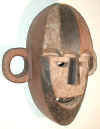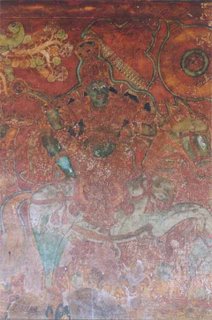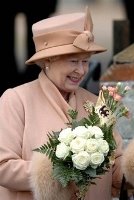PADMANABHAPURAM MURALSThis Magnificent palace is also a splendid example of native architecture at its best. And it has utilized the plenitude and excellence of Kerala wood. If one wishes to experience the grandeur of carved wood, Padmanabhapuram is just the place. Padmanabhapuram now in the Kanyakumari district of Tamil Nadu is about 65 Kms to the south of Thiruvananthapuram. A slight detour from the national highway running through Thiruvananthapuram and Nagarcoil will bring you to this old palace enclosed with in a four kilometer perimeter of a huge granite wall. The reign of Marthanda Varma, the most powerful of the Thiruvithamkur Kings (1729-1758), was also the most glorious period in Padmanabhapuram history. It was Marthanda Varma, the maker of modern Thiruvithamkur , who gave the palace and its surroundings the present name of Padmanabhapuram or the abode of Padmanabha. This was around 1744, before which the place was known as Kalkulam.
Murals decorate the inner walls of the room. These paintings depict gods and goddesses of the Hindu pantheon and are intended to create a congenial atmosphere for meditation. On the western and eastern walls, the two paintings of Anantha Padmanabha from the central theme. And both these paintings were held in reverence since it was believed to be sanctified by the presence of the particular deity.
GAJENDRA MOKSHA OF KRISHNAPURAMKayamkulam Kottaram ( Krishnapuram Palace) was constructed the reign of Marthanda Varma (1729-58), the king of east while Travancore . This Palace is noted for its peculiar architectural style, which is a typical 'Pathinarukettu'. Besides it is the miniature Padmanabhapuram Palace. The head quarters of Travancore. This Palace is also noted for 'Gajendra Moksham', the largest single panel of mural painting found in Kerala.
The Bhagavata describes Gajendra Moksha as one of the most important exploits of Lord Visnu. A great devotee of Vishnu, King Indrayumna, was cursed by Saga Agastya to be reborn as an elephant. The sage’s words proved true and indrayumna was reborn as Gajendra or the king of elephants. One day as he stepped in to a lake to drink his fill, he was caught by a crocodile. Though he fought he fought to shake it off with all his might the crocodile only tightened its grip. The story runs that Gajendra remained thus for many years. Finally in great despair, he cried piteously to the Lord to help him. Hearing his entreaties Vishnu descended expeditiously from heaven on the back of garuda, his celestial transport.
Gajendra Moksha was a favourite theme of Indian sculptors and artists. Excellent sculptures on the above theme with minor deviations are to be found at Barhhut and Deogath (Uttar Pradesh) and at the three Pattadakkal temples of Karnataka.
PANAYANNARKAVU MURALSPanayannarkavu is one of those few temples in the state where the Sapta Matas or the Seven Mother Goddesses are worshipped as the presiding power. Chamundi, the fiercest of them all, gets the predominant place as Kali. There is also a temple of Siva in the premises. Situated in a lauxuriant grove near Parumala and girdled by a tributary of Pampa, this apparently modest temple is only about two miles from Mannar, a Village well known for its bell metal lamps and vessels. .
The shrine of the Sapta Matas is rectangular in structure. Murals are painted along all the available wall space. Probably these were done at the transitional phase of Vaishnavite influence on Saktheya cult. Vaishnavism helped to alleviate the fearsomeness of the tantric rituals once practiced here. How ever the murals on the front of the shrine and also those around the square shrine of Siva were painted much later, Presumably after the transition was complete. Like elsewhere the subjects of the frescoes were inspired by stories and episodes from the Devi Mahatyam, the Saiva Vaishnava Purnas and the Bhagavata.
The murals of Panayannarkavu are notable for their linear accuracy and agreeable color combinations. It is a little difficult to date these paintings. We can however presume that these frescoes were done in two phases. The murals around the small rectangular chief shrine were in all probability the earliest paintings. The paintings on the square shrine were completed later, presumably during the closing years of the reign of the King of Chirava a branch of the Odanadu Royal House, it was during this time that Vaishnava cult assimilated Sakti worship to effect a more colorful ritualistic pattern.
ETTUMANOOR MURALSWhen you travel eleven Kilometres to the north of Kottayam town you will reach Ettumanoor and its centuries-old temple of Siva. The small town has all the noise and bustle of any small provincial town. But as one travels northwards on the main highway the ambience of the temple infuses a rare kind of peace.
Ettumanoor Temple is also a museum of rare and beautiful works of art and sculptures in wood and stone.
The late Ananda Coomaramaswami in “An introduction to Indian Art” (1913) had pointed out that the Nataraja paintings is the only extant specimen of the old Dravidian style of painting. “.. of Dravidian painting the only old example to which I can refer is the fine eight-armed Nataraja fresco of the Siva temple at Ettumnanoor in North Thiruvithamkur, but no systematic search for paintings has been made in the older parts and on the more neglected surfaces or Thiruvithamkur and other southern temples”. Stella Kramrisch the late art historian and art critic was quite poetic in her appraisal”. Like a gigantic butterfly caught in a stained glass window and transformed in to its luminosity is the shape of the dancing Siva”. Coomaraswami’s claim that the Ettumanoor murals are the earliest example of Dravidian mural art, stands disputed since the discovery of the paintings of chittanavasal and Kanchepuram (7 th Century)
PUNDAREEKAPURAM MURALSPundareekapuram is a small temple atop a little rise called Midayikunnam near Thalayolaparampu in Kottayam. Architecturally it is not very different from any typical village temple of Kerala. A tiled and saddle roofed square “cuttampalam”encloses a square sanctum sanctorum. Appended to the square enclosure is a small ‘balikkalpura’. The idol worshipped here is the image of Vishnu sitting astride his celestial vehicle Garuda together with Bhoodevi. This is a rare icon.
There’s a fine picture of Siva and Parvathi sitting beneath the Kalpavriksha; a powerful picture of Durga vanquishing the buffalo-headed demon Mahisha, the pranks of Krishna the divine boy of Ambadi; a picture of a Yakshi the dangerous seductress of legends; Rama Pattabhishekham or the coronation of Sri Rama; Siva Thandava and a picture of Sastha astride a horse to point out a few of the striking paintings at Pundareekapuram.
Since the temple is tucked away in off rarely trodden village road, these paintings have for long remained relatively obscure. But these murals, no doubt can hold their own against the better known wall-paintings of Padmanabhapuram and Mattancheri Palaces. In all probability these murals were painted during the later half of the 18 th century.
Another characteristic of the Pundareekapuram paintings and Kerala murals in general are the boldness and accuracy of the lines which give a unique force to the paintings.
MATTANCHERI MURALSMattancheri in Kochi has a distinct smell of trade and commerce even today. The passage of the years has only retouched her trading face. Large godowns still stand in and around the quayside.
Mattancheri had also been a former capital of the erstwhile rulers of Kochi. When the ‘adventurers from over the seas’ came to Kochi seeking trade, Mattancheri also bustled as a brisk trading port. First the Portuguese and later the Dutch beguiled rulers with gold and gifts in exchange for spices especially black pepper.
Mattancheri is an artist’s delight. For here are some very beautiful frescoes. The walls of some of the palace champers are adorned with paintings done in the traditional mural style of Kerala.
Ramayana MuralsThe paintings cover a wide range of themes from the Puthrakameshti Yagam to Rama’s return to Ayodya after vanquishing King Ravana of Lanka. The northern part of the eastern walkl crowded with scence from the early chapters of the story of Rama. The bearded king Dasaratha is seen conferring with his minister, Sumantra, Rishisringa the deerheaded sage performing the Yagam or ritual sacrifice, Dasaratha handing out the divine ‘Prasadam’ to his consorts are the other main paintings here.
Murals in the Staircase RoomThe themes are several and various in this room which measures 18 feet by 17 feet. The paintings include a family portrait of Siva, Vishnu in his Sankarshana form, Adhanariswara or Siva as half-male and half-female, the coronation of Rama, Kirata-Shiva, Anantashayanam, few themes from the Devi Mahathmyam, paintings of the ten incarnations of Vishnu and also an unfinished painting of Vishnu.
Painting in the lower chambers The most beautiful frescoes of Mattancheri are doubtless the murals in these rooms. The main theme is the nuptial of Shiva and Parvati. These paintings are only outline sketches in ochre.
The Bhagavatham paintings of the bed chamber of the bed chamber and the paintings in the staircase room werte in all probability done at the end of the 17 th century of later by an inferior artist.
KOTTACKAL MURALSKottackal owes its fame today as onne of the chief centres of Ayurvedic treatment. But formely it was better known as an important eastern principality of the Zamorins of Kozhikode3. Before it became the eastern seat of the Zamorins, this area was governed by Karuvayoor Mosos as a representative of the King of Valluvanad.
The date of paintings, the names of the artists who painted them and their patron are all inscribed on the southern side of the shrine. According to the inscription these murals were painted in the period between 1041 and 1053 of the Malayalam Era (1866-1878)
There are about 40 paintings here. While some subjects cover the entire length of the walls, a few are painted in a miniature fashion divided and contained in upper and lower panels. The most remarkable qualities of several of these paintings are its eye-catching colors and clear, firm lines. A closer scrutiny will reveal the iconographical standards adhered to in the creation of these godly figures. The selection of subjects and the manner pasteurization bespeak its influence and precedence. It was a product of the Shaktheya cult that had imbibed a synthesis of Saivism and Vaishnavism.
One can easily notice two separate styles of painting at Kottackal. Richness of colors used and the bold and accurate lines the paintings are the hallmarks of the two styles. If forced to evaluate the relative merits of the two styles the sure touch of a master-artist is obvious in the former, whereas the colors are fresh and sparkling. This is so because the pictures are extremely good from the point of view of lines as well. The pictures of Siva and Mohini, Garuda Shakti, Lord Varaha holding goddess Earth are good examples to illustrate this.
CHURCH FRESCOES IN KERALAThe Syond of Diamper in 1599 had decreed the need for decorating churches with paintings as well as images. A very common feature of churches is the paintings in oils on the wooden screens in the altar. Frescoes, if any, invariably decorated the walls around the altar. Murals on the roof above the altar also were not very rare.
If Christian frescoes painters seemed to have paid more attention to a more or less realistic representation of the human anatomy, temple muralists delighted in presenting a highly imaginative and idealistic notion of person and things.
The Church at CheppadThe St.George’s Orthodox Church at Cheppad in Kayamkulm, Alappuzha is believed to have been constructed partially with portions of an old 13 th century church at Haripad.
The forty nine odd frescoes in this are fine examples of the Christian mural art of the early medieval period. They can be dated as earlier than those at Vallom, Kanjoor or Koratty churches.
The Themes are all Biblical ranging from the annunciation of Mary, Jesus’ birth, the flight unto Egypt, the Last Supper and pictures of the Crucified Christ. How ever the most remarkable ones here ere those of Noah and his Ark, Judas’ betrayal of Christ and Jesus with his disciples.
Mar Sabore and Afroth Church.The centuries old Syrian-Jacobite church is situated at Akapparambu near Ankamali(Eranakulam). The present Church is only a replacement or perhaps and enlargement of the ancient structure.
On the upper halves of the walls around the alter are some remarkable beautiful frescoes, surely the best example of church murals of Kerala.
Satan tempting Eve in the Garden of Eden, Prophet Elijah handing over his mantle to Elisha before ascending to heaven, mosses on mount Sinai with the tablet of the ten commandments, Sabore and Afroth engaged in theological arguments with Namboothiri Brahmins are among the Interest murals here.
St.Mary’s Church, Kanjoor There are two large frescoes on either side of the main door of the church.Apart from this there are several oil paintings around the alter. The two frescoes are commemoration of the defeat of tippu’s marauding army when it sought to plunder the church in 1790. While one mural has captured the fierce and bloody encounter between tippu’s troops and the combined forces of British cannons and native infantry, the other is a victory march of the letter. Grue some details like a corpse of one of the marauders pitch forked at the end of a British bayonet bring out the horror and the mercilessness of war. This fresco is thus significant from a historical perspective also Kottayam Cheriyapalli This is an old church tucked one and a half kms from the centre of Kottayam town. The church and surrounding places are steeped in history being in the times of the Thekkumkoor kings.
Cheriyapalli has some fairly large comparatively fine murals. There is a painting of the last Supper, Judas accepting the silver for his betrayal, Jesus’ disciples waiting for him in the garden of Gethsemane, Jesus being whipped and dragged publicly. His trial, Pontius Pilate, washing his hands after condemning Christ to the cross, the Crucifixion, the Virgin Mother with the body of Christ on her lap and Christ’s ascension are the other frescoes here. But here what we cannot help noticing is the color of Christ’s robe, which is ochre rather than white. Ochre in Hindu concept is a color related to mysticism and spirituality.
Other churches in Kerala that have old frescoes include St.Antony’s Ferona church at Olloor, St.Marys Churches at Thrissur and Koratty, the oldSyrian Church at Kandamattom and the Paliyakkara church at Thiruvalla.Kerala on the south-western coast of India has won the admiration of every visitor because of its resplendent greenery and luxuriant vegetation. A close study of the Kerala mural paintings will prove to be valuable in understanding the state's art and cultural tradition.






